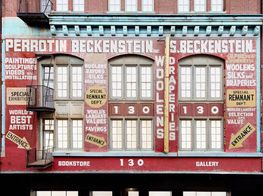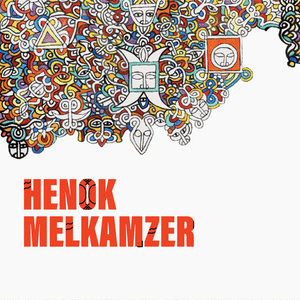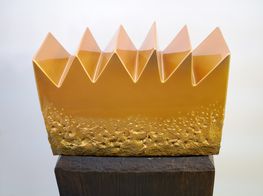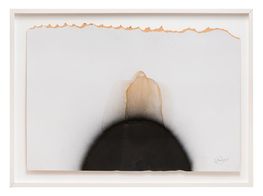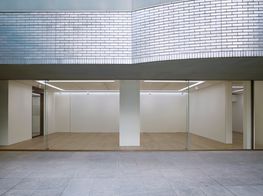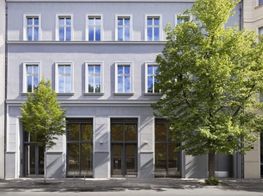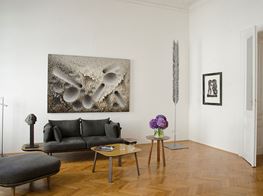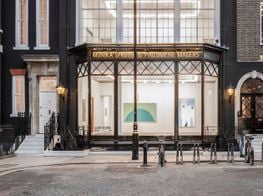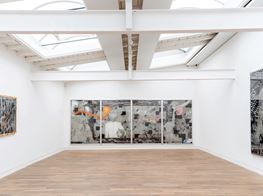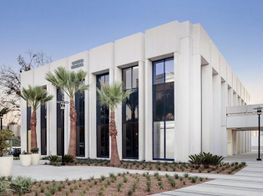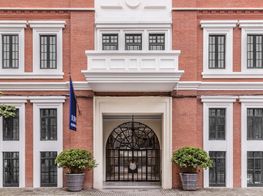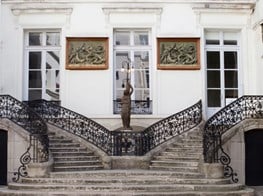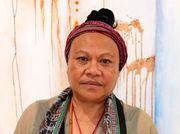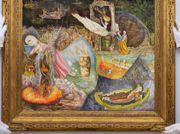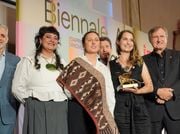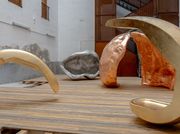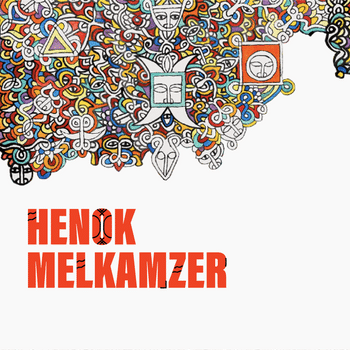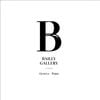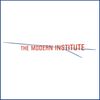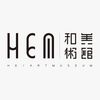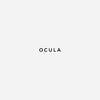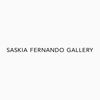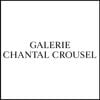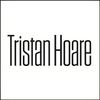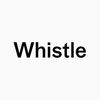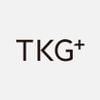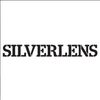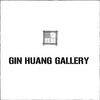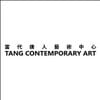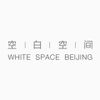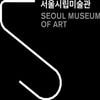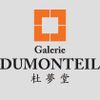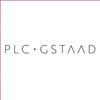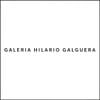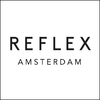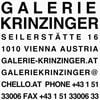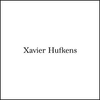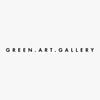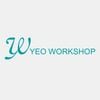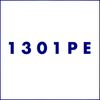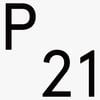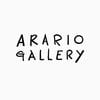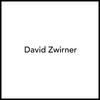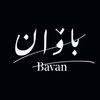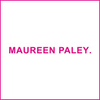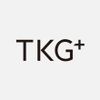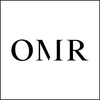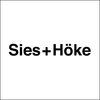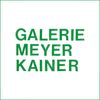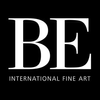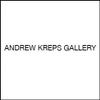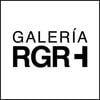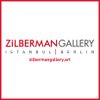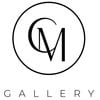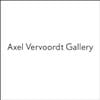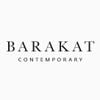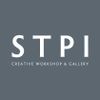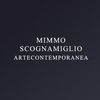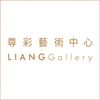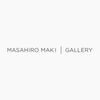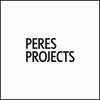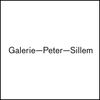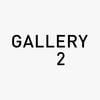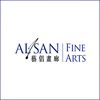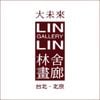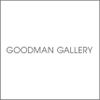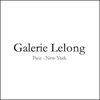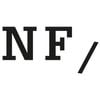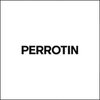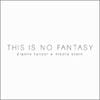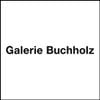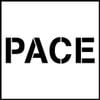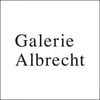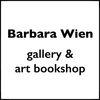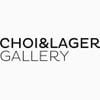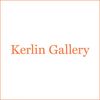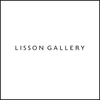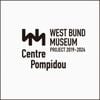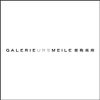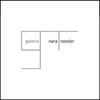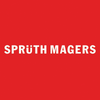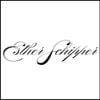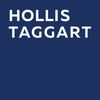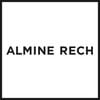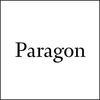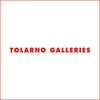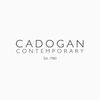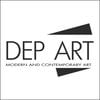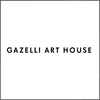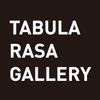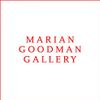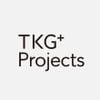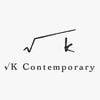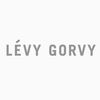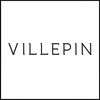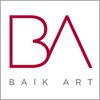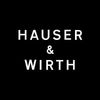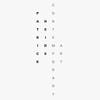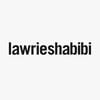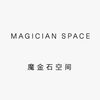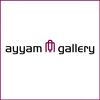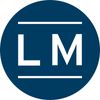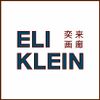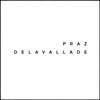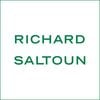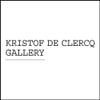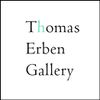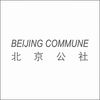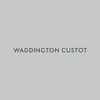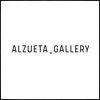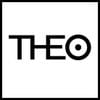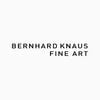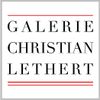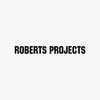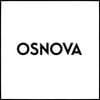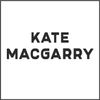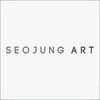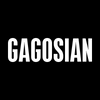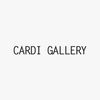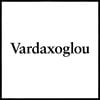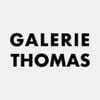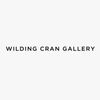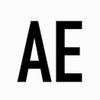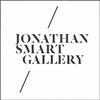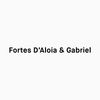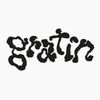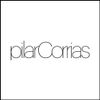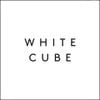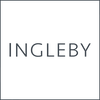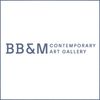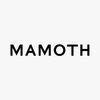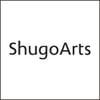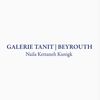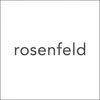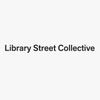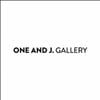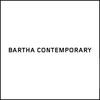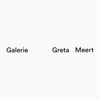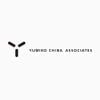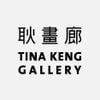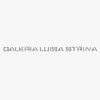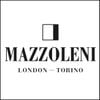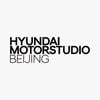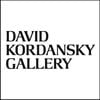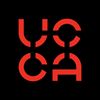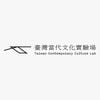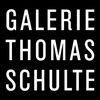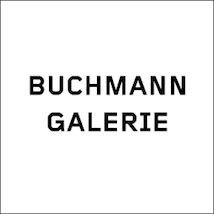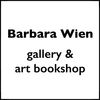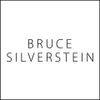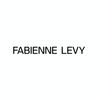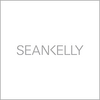On The Autobahn: A Report From North Rhine-Westphalia
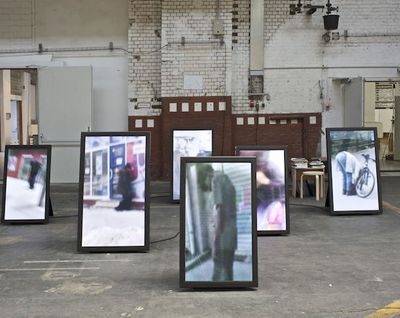
Project 25/25/25 is a quintessentially “NRW” affair. Celebrating 25 Years of the Arts Foundation North Rhine-Westphalia (Kunstiftung NRW), this expansive exhibition—which started in 2014 and will continue into 2015—pairs 25 artists with a constellation of 25 municipal museums spread out over a vast territory that makes up Germany’s most populated federal state, North Rhine-Westphalia.
The idea around the project is simple: each participating artist is invited to respond to a museum collection with a new commission that is then donated to the collection. Participants have so far included Lena Henke at the Skulpturenmuseum Glaskasten in Marl, who kicked off Project 25/25/25 in April 2014; Ken Okiishi presenting at the Museum Ludwig in Cologne; Wade Guyton at the Josef Albers Museum Quadrat in Bottrop; Pamela Rosenkranz at Kunstmuseum in Gelsenkirchen; and Ingrid Luche at Von der Heydt-Museum in Wuppertal, and Batia Suter at the LWL-Museum for Art and in Münster, where Pipilotti Rist recently unveiled an Arts Foundation NRW-supported commission: a visual projection viewable on the newly-designed building’s open, public patio. Upcoming projects include Otobong Nkanga at Museum Folkwang, Essen, Natascha Sadr Haghighian at Museum Abteiberg, Mönchengladbach, Neil Beloufa at the Lehmbruck Museum in Duisburg, ending with the final installment: Annette Kelm at Kunstmuseen Krefeld, due to open in May 2015.
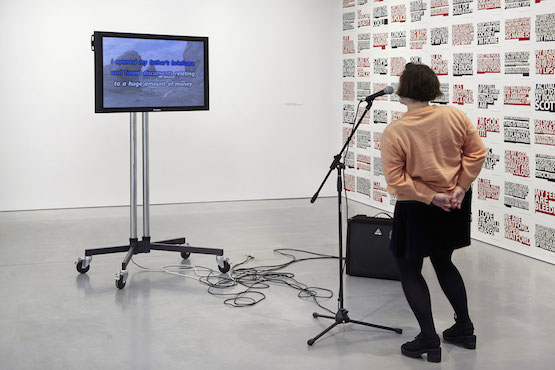 Thomson & Craighead, More Songs of Innocence and of Experience, 2013. Karaoke videos, microphone and amplifier. Dimensions variable. © Thomson & Craighead. Courtesy Carroll/Fletcher LondonThis expansive exhibition enacts a kind of cartography of the NRW region, who some have compared to Los Angeles, given that a vast number of cities are close in range, and travelling between them is de rigeur. Such movement is historically typical: Gerhard Richter, Sigmar Polke and Konrad Lueg famously drove a van with their work to Rudolf Jährling’s Galerie Parnass in Wuppertal, arranging their work in the drive so as to convince Jährling to give them an exhibition (Neue Realisten: Richter, Polke, Lueg, was held in November 1964). The road was important for the ZERO artists, too. In one story around the seminal exhibition Vision in Motion — Motion in Vision, which was held at the Hessenhuis cafe in Antwerp, Belgium, in 1959, Heinz Mack recalls driving his Volkswagon from Dusseldorf to the city with Yves Klein and Otto Piene. “It took us 2 and a half hours and in this time we developed a very exciting utopia: I explained my Sahara project, Klein developed his ideas about work with air, fire and water, and so on, and Piene developed his ideas of his art in the air.” As founding director of the ZERO Foundation Mattjis Visser notes, if you wanted to be an artist back in the day, you needed a car to get around. Today, the road continues to act as a connector: one of the most used Autobahns (federal highways) in Germany and the main highway of the Ruhr region—the most populous urban part of the NRW—is the A40 (which leads into the B1). It became the subject of a project by artist Markus Ambach titled B1/A40 that was initiated in 2010, and which engages in projects along the highway so as to engage with residents of the Ruhr Area in their so-called Cultural Metropolis.
Thomson & Craighead, More Songs of Innocence and of Experience, 2013. Karaoke videos, microphone and amplifier. Dimensions variable. © Thomson & Craighead. Courtesy Carroll/Fletcher LondonThis expansive exhibition enacts a kind of cartography of the NRW region, who some have compared to Los Angeles, given that a vast number of cities are close in range, and travelling between them is de rigeur. Such movement is historically typical: Gerhard Richter, Sigmar Polke and Konrad Lueg famously drove a van with their work to Rudolf Jährling’s Galerie Parnass in Wuppertal, arranging their work in the drive so as to convince Jährling to give them an exhibition (Neue Realisten: Richter, Polke, Lueg, was held in November 1964). The road was important for the ZERO artists, too. In one story around the seminal exhibition Vision in Motion — Motion in Vision, which was held at the Hessenhuis cafe in Antwerp, Belgium, in 1959, Heinz Mack recalls driving his Volkswagon from Dusseldorf to the city with Yves Klein and Otto Piene. “It took us 2 and a half hours and in this time we developed a very exciting utopia: I explained my Sahara project, Klein developed his ideas about work with air, fire and water, and so on, and Piene developed his ideas of his art in the air.” As founding director of the ZERO Foundation Mattjis Visser notes, if you wanted to be an artist back in the day, you needed a car to get around. Today, the road continues to act as a connector: one of the most used Autobahns (federal highways) in Germany and the main highway of the Ruhr region—the most populous urban part of the NRW—is the A40 (which leads into the B1). It became the subject of a project by artist Markus Ambach titled B1/A40 that was initiated in 2010, and which engages in projects along the highway so as to engage with residents of the Ruhr Area in their so-called Cultural Metropolis.
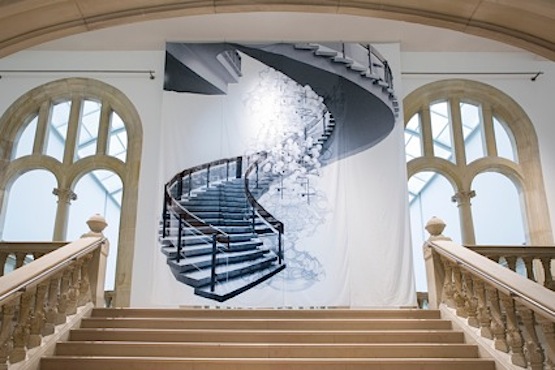 LWL/Hanna NeanderThere is no denying that North Rhine-Westphalia is culture rich. Talking with Heinz Mack, he explains that one would need another life to see everything there is on offer in the NRW, given that every town has a world-class museum. Take Kunstmuseen Krefeld: a singular body representing three houses, including two exemplary buildings aside from the museum’s main space—the Museum Haus Lange and the Museum Haus Esters: two residential houses designed by Mies van der Rohe in the late 1920s for industrialist collector friends that were later absorbed into Kunstmuseen Krefeld in 1955 and 1981, respectively. It was at Haus Lange that the 2014 Nam June Paik Award (initiated and fully supported by the Arts Foundation NRW) staged its exhibition featuring winner Camille Henrot, and finalists Thomson & Craighead, Ulf Aminde and Cory Arcangel (as well as winner of the previous award, Celine Berger). Haus Lange itself has a remarkable history: the building played host to artists such as Jean Tinguely, Jesús Rafael Soto, and Daniel Spoerri under the directorship of Paul Wember in the 1950s and 60s. At the time, Wember was one of the few directors who actively supported—and collected—contemporary art. (Haus Lange also houses a permanent Yves Klein white room, which was installed in 1961.)
LWL/Hanna NeanderThere is no denying that North Rhine-Westphalia is culture rich. Talking with Heinz Mack, he explains that one would need another life to see everything there is on offer in the NRW, given that every town has a world-class museum. Take Kunstmuseen Krefeld: a singular body representing three houses, including two exemplary buildings aside from the museum’s main space—the Museum Haus Lange and the Museum Haus Esters: two residential houses designed by Mies van der Rohe in the late 1920s for industrialist collector friends that were later absorbed into Kunstmuseen Krefeld in 1955 and 1981, respectively. It was at Haus Lange that the 2014 Nam June Paik Award (initiated and fully supported by the Arts Foundation NRW) staged its exhibition featuring winner Camille Henrot, and finalists Thomson & Craighead, Ulf Aminde and Cory Arcangel (as well as winner of the previous award, Celine Berger). Haus Lange itself has a remarkable history: the building played host to artists such as Jean Tinguely, Jesús Rafael Soto, and Daniel Spoerri under the directorship of Paul Wember in the 1950s and 60s. At the time, Wember was one of the few directors who actively supported—and collected—contemporary art. (Haus Lange also houses a permanent Yves Klein white room, which was installed in 1961.)
 Ulf Aminde, Urban Tai Chi, 2012. 7-channel SD video installation, colour, sound, 36’’ – 3’. Nam June Paik Award 2014, Exhibition view, Museum Haus Lange, Krefeld 2014. © U. Aminde courtesy Ulf Aminde and Galerie Tanja Wagner, BerlinAs I was told, it is incredible that there are museums like this in places like Krefeld—a testament to the support culture receives from various sources, from independent funds such as the Arts Foundation NRW, to city and state bodies, not to mention the willingness to preserve spaces of cultural and historical importance. (The ZERO Foundation was established with the full support of the city of Dusseldorf so as to ensure archives were not taken out of the country.) “There is even a museum in Unna!” my guide exclaimed so as to emphasise the point that such a remarkable institution might exist in what is quite a small—and very beautiful—town. Of course, this museum really isn’t just any old museum: it is the first and only museum dedicated to light art in the world which recently launched The International Light Award. The Light Museum is a member of the RuhrArtMuseums network: 20 museums in 15 cities across the Ruhr area, from Duisburg to Marl, housed in industrial heritage buildings, palaces, outstanding architectures of the post-war period and newly-designed buildings. As Mack notes proudly of all these institutions: “They are working very hard.”
Ulf Aminde, Urban Tai Chi, 2012. 7-channel SD video installation, colour, sound, 36’’ – 3’. Nam June Paik Award 2014, Exhibition view, Museum Haus Lange, Krefeld 2014. © U. Aminde courtesy Ulf Aminde and Galerie Tanja Wagner, BerlinAs I was told, it is incredible that there are museums like this in places like Krefeld—a testament to the support culture receives from various sources, from independent funds such as the Arts Foundation NRW, to city and state bodies, not to mention the willingness to preserve spaces of cultural and historical importance. (The ZERO Foundation was established with the full support of the city of Dusseldorf so as to ensure archives were not taken out of the country.) “There is even a museum in Unna!” my guide exclaimed so as to emphasise the point that such a remarkable institution might exist in what is quite a small—and very beautiful—town. Of course, this museum really isn’t just any old museum: it is the first and only museum dedicated to light art in the world which recently launched The International Light Award. The Light Museum is a member of the RuhrArtMuseums network: 20 museums in 15 cities across the Ruhr area, from Duisburg to Marl, housed in industrial heritage buildings, palaces, outstanding architectures of the post-war period and newly-designed buildings. As Mack notes proudly of all these institutions: “They are working very hard.”
And Project 25/25/25 seeks to reflect these efforts by highlighting the sheer wealth of culture in the NRW region and encouraging a greater sense of ownership in each community of “their” museum. In doing so, the project also reflects on a much larger history: one that involves the process of deindustrialization that occurred in what was the industrial heartland of Germany for the most part of the 20th Century. As General Secretary of the Arts Foundation NRW, Dr. Ursula Sinnreich explains, “Since the restructuring of the world economy in the 1970s and 80s, as well as the reorganisation of all social and economic structures in the context of globalisation in the 1990s, this traditional industrial region has faced immense challenges. For more than two decades, plant closures and unemployment were ongoing issues in the region. Indeed they still are, with the recent closure of the Opel plant in Bochum and the closure of the last coal mine in Duisburg in 2014.”
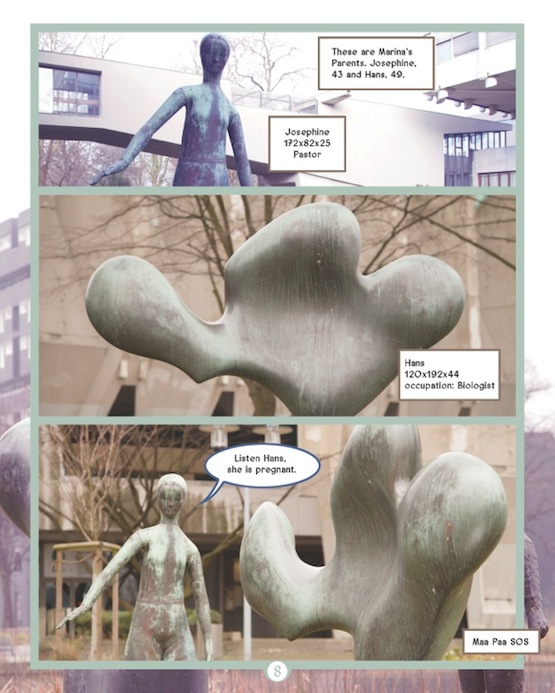 Lena Henke at Skulpturenmuseum Glaskasten MarlIt was around this shift that the foundation was established in 1989—just some three years after the closure of the last coal mine in Essen known as Zollverein (followed by the final closure on the site of the coking plant in 1993). Now a Unesco World Heritage Site, the closure of Zollverein heralded a philosophy of “preservation through conversion” that would revive ex-industrial sites throughout the NRW via the promotion of art and culture. In keeping, Johannes Rau, then president of North Rhine-Westphalia, founded the Arts Foundation NRW, which would become one of the many bodies to be financed by the Lottery Fund, a scheme that was set up in the 1950s. Today, the foundation receives 9.5 million euros annually, and it enjoys “complete administrative freedom to award these funds in a totally independent manner,” which includes the inclusion of independent and international experts and juries to review funding decisions.
Lena Henke at Skulpturenmuseum Glaskasten MarlIt was around this shift that the foundation was established in 1989—just some three years after the closure of the last coal mine in Essen known as Zollverein (followed by the final closure on the site of the coking plant in 1993). Now a Unesco World Heritage Site, the closure of Zollverein heralded a philosophy of “preservation through conversion” that would revive ex-industrial sites throughout the NRW via the promotion of art and culture. In keeping, Johannes Rau, then president of North Rhine-Westphalia, founded the Arts Foundation NRW, which would become one of the many bodies to be financed by the Lottery Fund, a scheme that was set up in the 1950s. Today, the foundation receives 9.5 million euros annually, and it enjoys “complete administrative freedom to award these funds in a totally independent manner,” which includes the inclusion of independent and international experts and juries to review funding decisions.
 Harry Partch, Delusion of the Fury. Ensemble musik/Fabrik. ©Klaus RudolphThis independence is something that is appreciated by all of the fund’s recipients, who are a testament to just how wide the foundation casts its net beyond the Visual Arts to include performance, dance, and music, offering support to such projects as the Ben J. Riepe Company and Ensemble musikFabrik. Of the support the latter has received, a substantial contribution went into the production of Harry Partch’s Delusion of the Fury, which included the creation of instruments Partch designed and made to play a 43-note scale he devised: a helping hand that made what seemed impossible possible, to quote the foundation’s motto. Delusion of the Fury has been performed worldwide, with an upcoming performance at the Lincoln Center in New York this coming July, and the Edinburgh iteration was even voted the best live event of 2014 by The Guardian. Indeed, on the support the foundation provides, Manuel Graf (who was awarded 15,000 euros for the Nam June Paik Newcomer Award in 2014) jokes that the foundation knows his bank details better than he does. This is a testament to the unfailing support offered not only to local institutions, but also to its artists. But as Sinnreich explains, this is something typical in Germany, where art and culture are valued highly. “The land, the state and bodies such as the Arts Foundation NRW understand their role not as a subsidy to needy institutions,” she explains, “but as an investment into the future.”—[O]
Harry Partch, Delusion of the Fury. Ensemble musik/Fabrik. ©Klaus RudolphThis independence is something that is appreciated by all of the fund’s recipients, who are a testament to just how wide the foundation casts its net beyond the Visual Arts to include performance, dance, and music, offering support to such projects as the Ben J. Riepe Company and Ensemble musikFabrik. Of the support the latter has received, a substantial contribution went into the production of Harry Partch’s Delusion of the Fury, which included the creation of instruments Partch designed and made to play a 43-note scale he devised: a helping hand that made what seemed impossible possible, to quote the foundation’s motto. Delusion of the Fury has been performed worldwide, with an upcoming performance at the Lincoln Center in New York this coming July, and the Edinburgh iteration was even voted the best live event of 2014 by The Guardian. Indeed, on the support the foundation provides, Manuel Graf (who was awarded 15,000 euros for the Nam June Paik Newcomer Award in 2014) jokes that the foundation knows his bank details better than he does. This is a testament to the unfailing support offered not only to local institutions, but also to its artists. But as Sinnreich explains, this is something typical in Germany, where art and culture are valued highly. “The land, the state and bodies such as the Arts Foundation NRW understand their role not as a subsidy to needy institutions,” she explains, “but as an investment into the future.”—[O]

